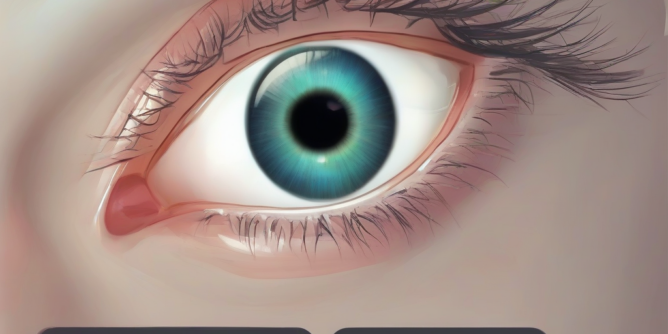
LASIK Eye Surgery Recovery: A Comprehensive Guide to Your Healing Journey
LASIK eye surgery is a revolutionary procedure that can correct refractive errors like nearsightedness, farsightedness, and astigmatism. However, understanding the recovery process is crucial for achieving optimal results and minimizing potential complications. This guide provides a detailed overview of what to expect during each stage of your LASIK recovery.
Immediate Post-Surgery (Day 1-3)
The immediate post-operative period is characterized by several common sensations. Expect some discomfort, dryness, and blurry vision. Your surgeon will provide specific instructions, but generally, you’ll experience:
- Mild to moderate discomfort: This can be managed with prescribed pain relievers. Avoid rubbing your eyes, which could dislodge the corneal flap.
- Dry eyes: Artificial tears and lubricating eye drops are essential during this phase. Your doctor will likely prescribe these to alleviate dryness and irritation.
- Blurry vision: Your vision will be blurry initially, but it should improve gradually over the first few days.
- Light sensitivity: Wearing sunglasses, especially outdoors, will help reduce discomfort from bright light.
- Halos and glare: Temporary halos or glare around lights are common, typically fading within a few days or weeks.
- Itching: Avoid scratching your eyes, as this can damage the healing cornea.
During this phase, strict adherence to your surgeon’s post-operative instructions is vital. This includes:
- Regularly applying prescribed eye drops: This helps maintain corneal hydration and prevent infection.
- Avoiding strenuous activities: Give your eyes time to rest and avoid activities that could increase pressure or impact the eyes.
- Getting plenty of rest: Allow your body ample time to heal.
- Attending all scheduled follow-up appointments: These appointments allow your surgeon to monitor your progress and address any concerns.
First Week (Days 4-7)
By the end of the first week, most patients experience a significant improvement in their vision. While the initial blurriness subsides, some residual dryness and mild discomfort may persist. Continue following your surgeon’s instructions, which may include:
- Reduced frequency of eye drops: Your doctor may gradually reduce the frequency of prescribed eye drops as your eyes heal.
- Gradual increase in activity: You can usually resume most of your daily activities, but avoid strenuous exercises or activities that could impact your eyes.
- Continued use of sunglasses: Protecting your eyes from bright light remains crucial during this phase.
Weeks 2-4
During weeks 2-4, most patients experience a further improvement in their vision. Dryness should gradually diminish, and any remaining discomfort should be minimal. At this stage:
- Vision stabilization: Your vision should be nearing its final clarity, though slight fluctuations are possible.
- Reduced reliance on eye drops: You may be able to reduce or discontinue the use of eye drops.
- Return to normal activities: You should be able to resume all normal activities, including strenuous exercise.
- Important follow-up appointment: A crucial follow-up appointment will typically occur during this time to assess your healing progress.
Months 1-3
In the first three months post-surgery, your vision continues to stabilize. While significant improvements occur in the first few weeks, subtle refinements can happen over the subsequent months. During this time:
- Continued vision improvement: Any remaining minor visual imperfections should continue to improve.
- Final visual acuity assessment: Your doctor will likely perform a final assessment to determine your final visual acuity.
- Potential for minor adjustments: In rare cases, minor adjustments may be needed to achieve optimal results.
Long-Term Recovery
After three months, most patients have achieved their final visual acuity. However, it’s important to understand that the ongoing maintenance of good eye health is crucial for long-term success. This includes:
- Regular eye exams: Schedule routine eye exams to monitor your eye health and detect any potential issues early.
- Protecting your eyes from UV radiation: Always wear sunglasses with UV protection when outdoors to shield your eyes from harmful UV rays.
- Maintaining good eye hygiene: Proper handwashing and avoiding rubbing your eyes are essential to prevent infection.
- Managing dry eye conditions: If dryness persists, consult your eye doctor about appropriate management strategies.
Factors Affecting Recovery Time
Several factors can influence the duration of your LASIK recovery. These include:
- Individual healing capabilities: Some individuals heal faster than others.
- Type of LASIK procedure performed: Different LASIK techniques may have slightly different recovery timelines.
- Pre-existing eye conditions: Patients with pre-existing eye conditions may experience a slightly longer recovery period.
- Post-operative care adherence: Strictly following your surgeon’s instructions is essential for optimal healing.
Potential Complications and How to Address Them
While LASIK is generally safe and effective, potential complications can occur. These are usually rare, but awareness is essential:
- Dry eyes: Dry eyes are a common temporary side effect, but persistent dryness may require additional treatment.
- Halos and glare: These are usually temporary, but in some cases, they may persist longer.
- Infection: Infection is a rare but serious complication that requires immediate medical attention.
- Corneal flap complications: Dislodgement or irregularities in the corneal flap are rare but can require further intervention.
- Undercorrection or overcorrection: In rare cases, further corrective procedures may be necessary.
If you experience any unusual symptoms like severe pain, significant vision changes, or signs of infection (redness, pus), contact your surgeon immediately.
Realistic Expectations
It’s crucial to have realistic expectations regarding LASIK recovery. While many patients experience significant vision improvement within days, the complete healing process takes several weeks or even months. Patience and adherence to post-operative instructions are key to a successful outcome.
Conclusion (Note: Instructions state to omit conclusion)